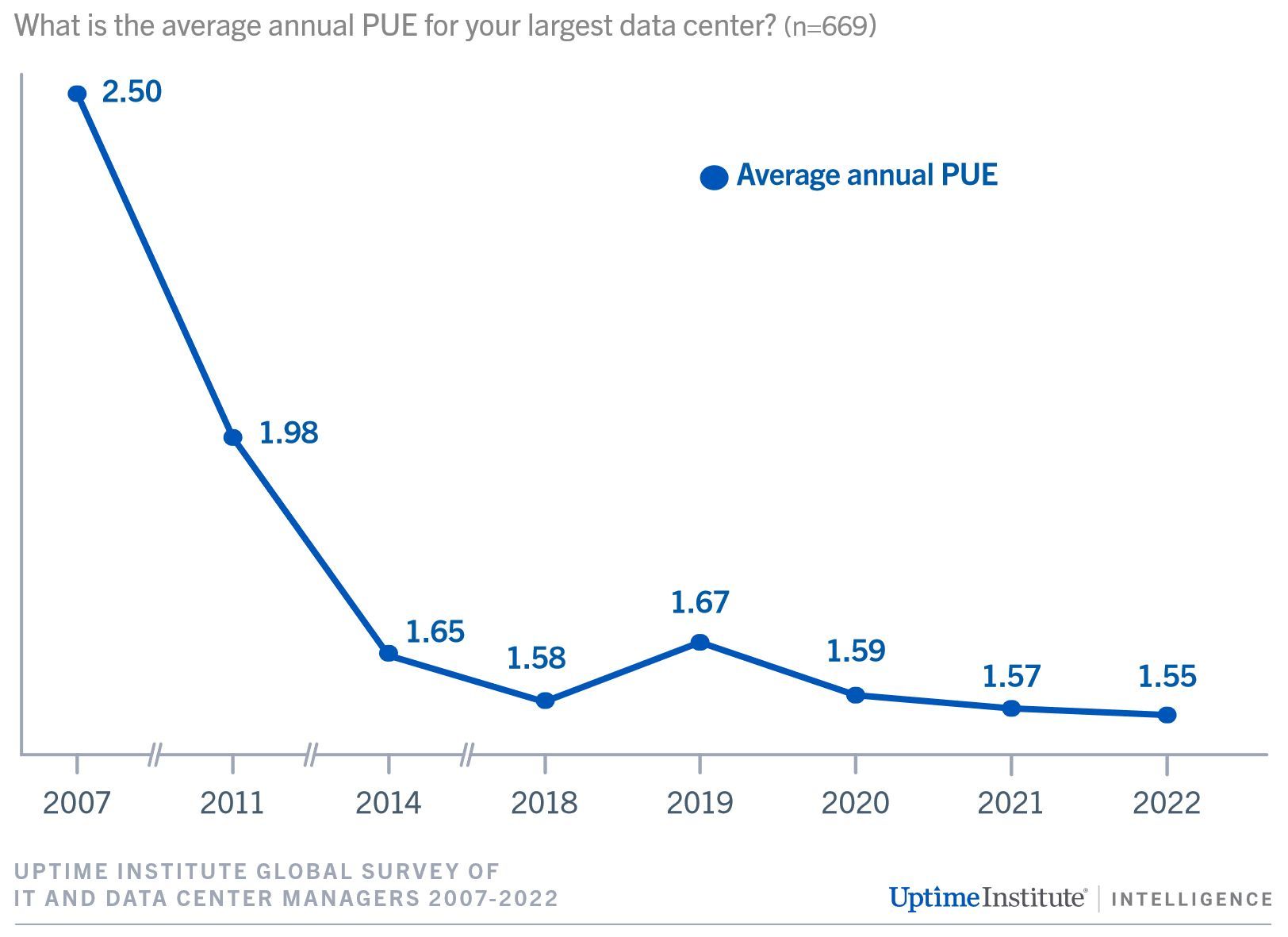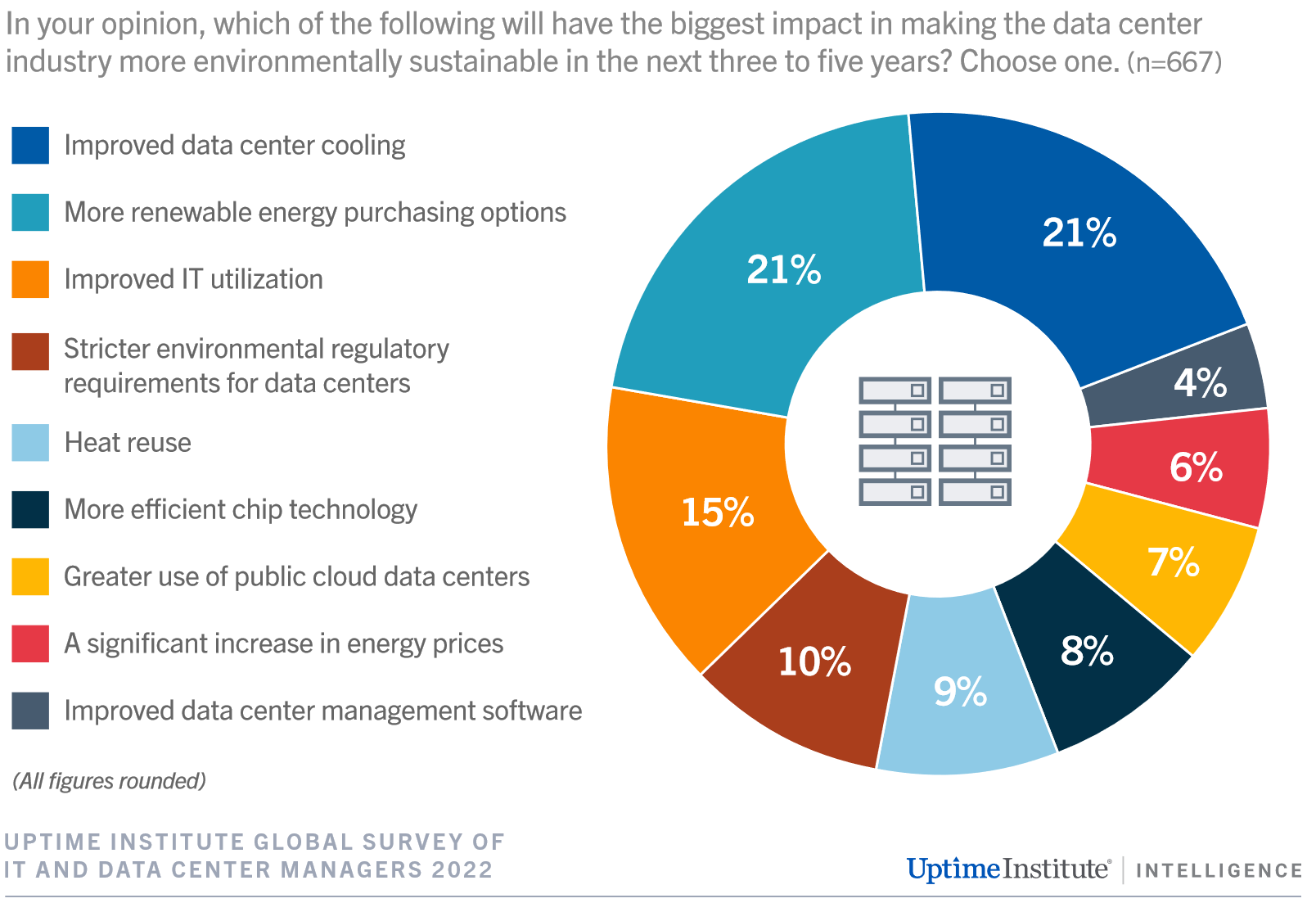Uptime Institute Global Data Center Survey 2022
Status:: 🟩
Links:: Uptime Institute
Zotero Tags:: #zotero/✅ #zotero/💎 #zotero/data_center_efficiency
Metadata
Type:: #zotero/report
Authors:: Davis, Jacqueline; Bizo, Daniel; Lawrence, Andy; Rogers, Owen; Smolaks, Max
Title:: Uptime Institute Global Data Center Survey 2022
Date:: 2022
Publisher:: Uptime Institute
URL:: https://uptimeinstitute.com/resources/research-and-reports/uptime-institute-global-data-center-survey-results-2022
Bibliography
Davis, J., Bizo, D., Lawrence, A., Rogers, O., & Smolaks, M. (2022). Uptime Institute Global Data Center Survey 2022 (No. 12; p. 33). Uptime Institute. https://uptimeinstitute.com/resources/research-and-reports/uptime-institute-global-data-center-survey-results-2022
Zotero
Abstract
The Uptime Institute Global Data Center Survey 2022 reveals an industry that is growing, dynamic and increasingly resilient. Spending on data centers and related services is strong, despite persistent staffing shortages, supply chain delays and other obstacles. Creating a more environmentally sustainable footprint is a major and growing focus as operators brace for heightened scrutiny, new regulations and reporting requirements.
Notes & Annotations
Survey respondents’ average annual PUE in 2022 was 1.55 (see Figure 1), which means that, in aggregate, their data centers expend 55% as much energy on cooling, power distribution and ancillary facility functions as on IT. This is consistent with the average PUE trend observed by Uptime in recent years — improvement slowed markedly in 2014, with only marginal gains since then.

New data center builds routinely outperform the average, achieving PUEs of 1.3 and below using facility designs and more advanced equipment that are optimized for lower energy use.
Relying too heavily on PUE as the industry’s key efficiency metric may reduce operators’ motivation to pursue IT efficiency improvements.
Most operators collect data that relates to power efficiency, which is as much about saving money as it is about reducing environmental impact. In 2022, 85% say they report their overall data center power use and 73% report PUE (for either internal or external use)
But when it comes to carbon emissions, the proportion of those who collect this data is still low (37%). This may quickly become an area of concern for businesses, as most organizations and / or their customers will be required to report this data under new laws, initiatives and rules that are being implemented around the world. Worse still, when asked if they collected only Scope 1 and 2 carbon emissions (direct and supply energy) or if they collect Scope 1, 2 and 3 (including emissions from supply chain partners), the numbers were low at 17% and 12%, respectively.
Many in the industry, however, think this finger-pointing is unfair: data centers are estimated to only account for 2% to 3% of electricity use, which represents about 0.4% to 0.75% of global CO2 emissions (electricity accounts for 20% to 25% of total global CO2 equivalent emissions).

In both North America and Europe, about three-quarters of data center operators believe nuclear should either play a core long-term role in providing grid power or is necessary for a period of transition. However, Europeans are more wary, with 35% saying nuclear should only play a temporary or transitional role (compared with just 23% in North America).
Cloud providers recommend that users distribute their workloads across multiple availability zones. An availability zone is a logical data center, often understood to have redundant and separate power and networking. Cloud providers are upfront that zones will suffer outages occasionally. Their position is that the user must architect their applications to handle the loss of an availability zone.
Zone outages are relatively common and more than a third of respondents say that the loss of an availability zone would result in significant performance issues, as shown in Figure 17.
A cloud service is a complex combination of data center, hardware, software and people. Services will fail from time to time due to unexpected emergent behavior from the complexity of interacting systems and people.
As a result, organizations that want to achieve high availability in the cloud must architect their applications to endure frequent outages of single zones. Lifting and shifting a workload from an on-premises server to a cloud virtual machine might reduce resiliency if the workload is not rearchitected to work across cloud zones.